Ever been in a lively place where people are laughing and having a good time, drinks in hand? You might have seen some folks getting a bit flirty after a few sips.
Now, the big question: Does Drunk Flirting Show True Intentions? Does drunk flirting really tell us what someone truly feels, or is it just the alcohol talking?
In this article, we’re going to explore if drunk flirting is a window into someone’s real intentions.
Imagine it like this: when people have a drink or two, they often feel more confident and outgoing. But does this liquid courage uncover their genuine feelings?
Join us as we break it down in simple terms. We’ll look at how alcohol affects our actions and whether those tipsy expressions are a true reflection of what’s in the heart.
So, does drunk flirting spill the beans on true intentions? Let’s find out together in this straightforward exploration.
Table of Contents
ToggleDoes Drunk Flirting Show True Intentions?
The question of whether drunk flirting genuinely reflects one’s true intentions is a nuanced exploration.
The link between drunk flirting and true intentions is uncertain. While alcohol can lower inhibitions, revealing genuine feelings, it’s not a guaranteed indicator.
Factors like the temporary impact of alcohol and individual differences make the authenticity of drunk flirting variable.
Some may express honest emotions, while others might be influenced by the moment. The reliability of drunk flirting as a reflection of true intentions varies from person to person and circumstance to circumstance.
Drunk flirting occurs in social settings where individuals, under the influence of alcohol, engage in flirtatious behavior. The answer to whether it reveals true intentions is not black and white.
Alcohol’s impact on inhibitions is a key factor. The prefrontal cortex, responsible for judgment and impulse control, is affected by alcohol, potentially lowering social barriers.
In this state, individuals may express feelings they would suppress when sober. The newfound boldness fueled by alcohol can create an environment where individuals feel more comfortable engaging in flirtatious actions.
However, it’s crucial to consider the temporary nature of alcohol’s influence. The uninhibited expressions witnessed during drunk flirting might be situational, a product of the moment rather than a true reflection of enduring feelings.
As the effects of alcohol wear off, the authenticity of these expressions comes into question.
In evaluating whether drunk flirting unveils true intentions, it’s essential to recognize individual differences.
Some may be more influenced by the liberating effects of alcohol, leading to more honest and open expression of emotions.
Others may find their actions swayed by the context, the people present, and the atmosphere.
The Psychology of Drunk Flirting:

Understanding the psychology behind drunk flirting requires an examination of alcohol’s impact on cognitive and emotional functions.
The prefrontal cortex, influenced by alcohol, experiences a reduction in judgment and impulse control. This disinhibition can lead to a heightened willingness to express feelings that might be suppressed in a sober state.
Alcohol’s role as a confidence booster is pivotal. It diminishes social anxiety, emboldening individuals to engage in flirtatious behavior they might otherwise avoid.
The increased sense of self-assurance often translates into more assertive and expressive communication, contributing to the perception that drunk flirting reveals genuine intentions.
Emotional vulnerability is another layer of the psychology at play. As inhibitions lower, individuals may find themselves more open and honest about their emotions. The emotional barriers that exist in a sober state may crumble, leading to more candid expressions of attraction and interest.
In summary, the psychology of drunk flirting is a complex interplay between the impact of alcohol on cognitive functions and the emotional vulnerability it induces.
Understanding these dynamics provides insights into whether drunk flirting serves as a genuine revelation of one’s true intentions or if it is a transient effect of inebriation.
More: Why Do Guys Start Caring When You Stop Caring
Different Types of Drunk Flirting
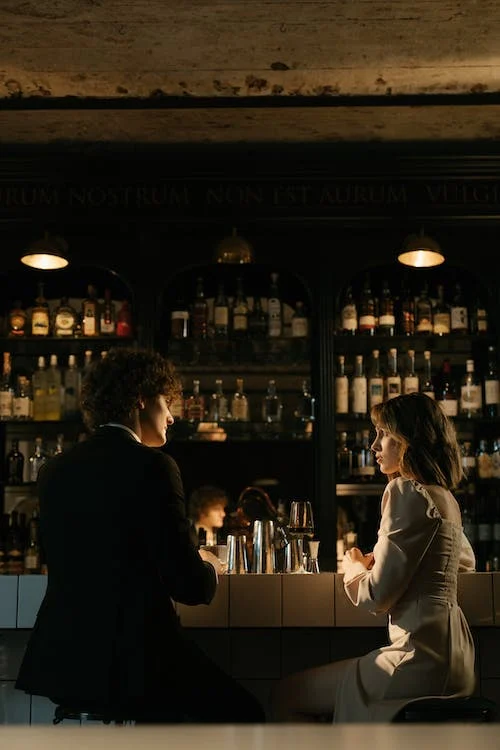
In the tapestry of human interactions, the dynamics of drunk flirting weave a complex narrative where inhibitions, liquid courage, and amplified emotions collide.
The “Liquid Courage” Type:
Encountering the “liquid courage” type unveils a person who, in regular circumstances, might shy away from flirting.
However, with the influence of alcohol acting as a social lubricant, there’s a notable transformation in their social demeanor.
The once reserved individual becomes more outgoing, shedding inhibitions and embracing a boldness that alcohol uniquely provides.
The “Amplified Feelings” Type:
In contrast, the “amplified feelings” type already harbors emotions for someone before consuming alcohol.
The introduction of alcohol serves as a catalyst, magnifying and bringing to the forefront these pre-existing sentiments.
What might be subtly expressed in sobriety takes a central stage under the influence, making their feelings more pronounced and evident.
The “Attention-Seeking” Type:
For some individuals, drunk flirting is less about genuine interest and more about seeking attention. In this scenario, the interaction fueled by alcohol becomes a strategic move to garner recognition rather than an authentic pursuit of connection.
The individual may engage in flirtatious behavior not out of genuine attraction but as a means to stand out or receive acknowledgment in a social setting.
Understanding these different types adds layers to the intricate dynamics of drunk flirting, where motivations can vary significantly from one person to another.
Reasons why drunk flirting might reveal true intentions:
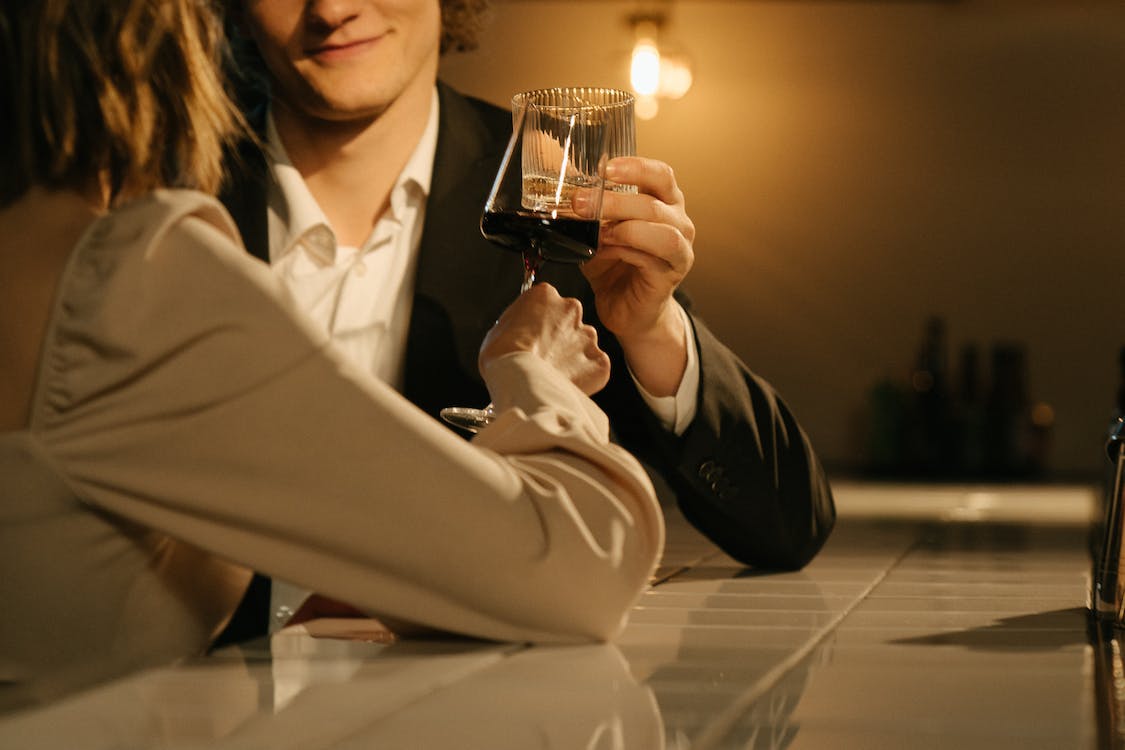
In the landscape of intoxicated interactions, the unraveling of inhibitions emerges as a pivotal force.
Alcohol’s unique talent for lowering social anxieties provides fertile ground for the revelation of concealed feelings.
As inhibitory barriers dissolve, genuine emotions surface, suggesting a more authentic expression of romantic interest.
Let’s delve into the facets that make drunk flirting a potential gateway to true intentions.
Loss of Inhibitions:
Within the tapestry of drunk flirting, the loosening grip of inhibitions stands out as a critical element. Alcohol’s distinctive ability to lower social anxieties creates an environment where individuals feel more liberated to express their hidden feelings.
The dissipation of inhibitory barriers under the influence allows genuine emotions to emerge, potentially leading to a more unfiltered and authentic interaction.
Increased Emotional Vulnerability:
The landscape of drunk flirting is marked by an undercurrent of increased emotional vulnerability. Intoxication, as a natural consequence, renders individuals more open and honest about their emotions.
In this atmosphere, emotional walls break down, fostering an environment conducive to genuine exchanges.
Exploring this emotional vulnerability provides insights into how drunk flirting may serve as a conduit for the authentic expression of true intentions.
Disinhibition of Subconscious Desires:
Delving into the authenticity of drunk flirting involves understanding the disinhibition of subconscious desires.
As alcohol weakens self-control, buried desires that are typically concealed may come to the forefront.
This unearths aspects of true intentions that are otherwise kept under wraps, providing observers with a raw and unfiltered glimpse into the subconscious desires that may drive drunk flirting.
Unfiltered Communication:
A defining characteristic of drunk flirting is the phenomenon of unfiltered communication. Inebriated speech, characterized by its directness and lack of social filters, often bypasses the usual constraints that might temper one’s expression of true feelings.
This unguarded communication style creates an atmosphere where individuals feel liberated to articulate their genuine intentions without the inhibitions present in a sober setting.
Support from Research:
Scientific exploration lends empirical support to the notion that alcohol can enhance emotional expression and truthfulness.
Understanding the backing from research adds a layer of credibility to the idea that the influence of alcohol may indeed reveal genuine emotions.
By delving into the scientific perspective, we gain insights into how drunk flirting may transcend anecdotal evidence, providing a nuanced understanding of its potential link to true intentions.
Read more: Do Friends with Benefits Kiss?
Reasons why drunk flirting might not reveal true intentions:
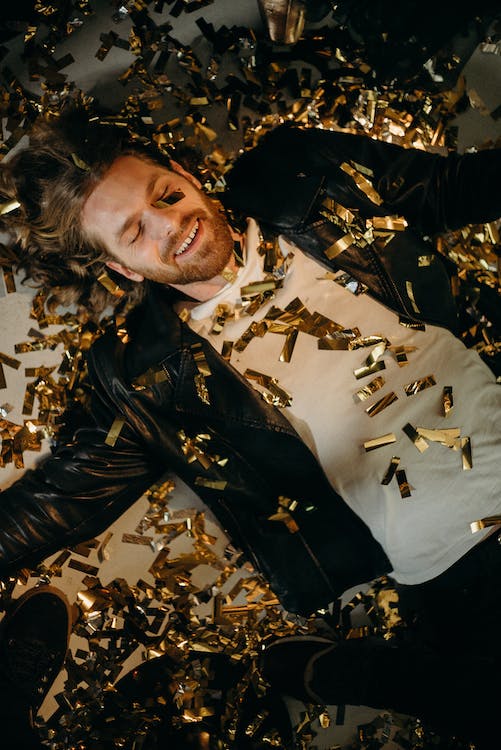
As we navigate the debate surrounding the authenticity of drunk flirting, the cognitive effects of alcohol emerge as a compelling counterargument.
Impaired judgment becomes a critical factor that can hinder the ability to accurately discern and communicate authentic feelings.
The altered mental state induced by alcohol introduces uncertainty, challenging the straightforward correlation between drunk flirting and true intentions.
Impaired Judgment:
Contrary to the assumption that drunk flirting straightforwardly indicates true intentions, the cognitive effects of alcohol present a compelling counterargument.
Impaired judgment becomes a critical factor that can hinder the ability to accurately discern and communicate authentic feelings.
The altered mental state induced by alcohol introduces uncertainty, challenging the straightforward correlation between drunk flirting and true intentions.
Misinterpretation of Signals:
Amidst the haze of alcohol, the potential for misinterpreting signals becomes a significant concern. The distortion of communication under the influence can lead to blurred signals and misread intentions.
What may seem like a clear expression of genuine interest could be muddled by the effects of intoxication, resulting in misunderstandings and misinterpretations that complicate the evaluation of true intentions.
Short-Term Effects:
The temporal dimension of the short-term effects of alcohol adds complexity to the evaluation of drunk flirting.
Feelings experienced under the influence may not necessarily translate into enduring desires or commitments.
As the effects of alcohol wear off, the clarity and intensity of emotions expressed during drunk flirting may diminish, leaving room for doubt about the longevity of the revealed intentions.
Situational Factors:
The influence of situational factors becomes apparent when dissecting the dynamics of drunk flirting. The context of a party or the presence of an attractive individual can heavily influence behavior, potentially steering it away from genuine intentions.
The external environment, compounded by the effects of alcohol, may lead to actions driven by the situation rather than reflective of true, lasting feelings.
Social Pressure:
Adding another layer of complexity, social pressure emerges as a factor influencing the authenticity of drunk flirting.
Alcohol’s impact on susceptibility to social pressures can push individuals to act out of character, complicating the assessment of their intentions.
The desire to conform to social expectations or gain approval may overshadow genuine emotions, clouding the authenticity of actions taken while under the influence.
Check out: Why Do I Want to Bite My Boyfriend?
How seriously should I take drunken flirting?
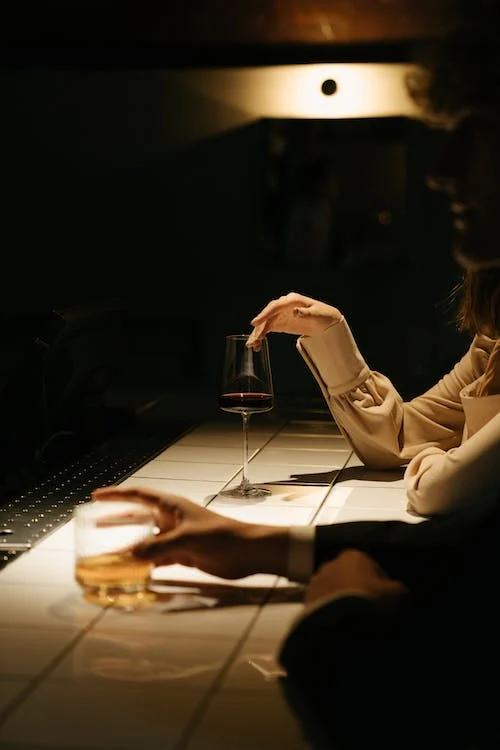
The seriousness one should attribute to drunken flirting is a nuanced consideration, dependent on various factors.
While alcohol can indeed lower inhibitions and provide a glimpse into authentic feelings, it’s essential to approach the interpretation of drunk flirting with a degree of caution.
Firstly, the individual’s typical behavior and personality should be taken into account. For those who are naturally reserved, alcohol might serve as a catalyst for genuine expression.
On the other hand, if someone is generally outgoing, their drunk flirting might align more closely with their sober tendencies.
The context of the situation plays a crucial role. Is the flirting occurring in a casual social setting or a more intimate environment? The nature of the event can influence the sincerity behind the actions.
Moreover, consider the relationship dynamics. Is there pre-existing romantic interest, or is this a spontaneous occurrence?
Existing emotions may be amplified under the influence, but spontaneous flirtation might not necessarily translate into long-term intentions.
Communication after the event is also telling. Does the individual acknowledge or retract their intoxicated expressions when sober? The way they address their actions when not under the influence can offer insights into the authenticity of their feelings.
However, it’s crucial not to overlook the impact of alcohol on judgment. Impaired cognitive function can lead to misinterpretation of signals and hinder accurate assessments of intentions. Short-term effects may also mean that feelings expressed in the moment do not necessarily endure.
In essence, while drunk flirting can provide a window into genuine emotions, it’s wise to approach it with a level-headed perspective.
Factors such as the individual’s baseline behavior, the context of the interaction, and subsequent sober communication all contribute to understanding the sincerity behind the intoxicated expressions.
Balancing an acknowledgment of potential authenticity with a recognition of the influence of alcohol ensures a more accurate interpretation of the significance of drunken flirting in any given situation.
How To Respond To Drunk Flirting?
When faced with drunk flirting, a thoughtful and respectful response is crucial. Understanding the context, communicating clearly, and considering the future dynamics of the relationship are essential aspects of navigating this situation.
By maintaining open communication and establishing boundaries, you can address the immediate interaction while laying the groundwork for healthier interactions moving forward.
Assess the Situation:
Understanding the context is the first step in responding to drunk flirting. Take into account the setting and your relationship with the person to tailor your response accordingly. Reflect on your own comfort levels to guide your actions in a way that feels right for you.
Respond with Respect and Clarity:
Maintaining respectful boundaries is paramount. Clearly communicate your comfort levels and intentions to ensure a mutual understanding. Whether you reciprocate interest or set boundaries, clarity in your response is key to navigating the situation respectfully.
Consider the Future:
Think about addressing the situation when both parties are sober. This allows for a more coherent conversation, free from the influence of alcohol. Assess the intentions behind the flirting to understand if it signifies genuine interest or is a momentary expression.
Maintain Open Communication:
Encourage honest dialogue by creating an atmosphere where both parties can express their feelings and intentions when sober. Share your own perspective openly, fostering transparency and understanding between both individuals.
Establish Boundaries for Future Interactions:
Setting clear expectations for future interactions is crucial. Communicate your comfort levels and boundaries to ensure both parties are on the same page moving forward. If there are mutual feelings, acknowledge them when sober, paving the way for a more informed progression of the relationship.
Read more: Why Do Guys Melt When A Girl Cries
Do Drunk Hugs Mean Anything?
The significance of drunk hugs can vary depending on the context and the individuals involved. In some cases, alcohol can lower inhibitions, making individuals more expressive of their genuine feelings.
A drunk hug might indicate a desire for closeness or connection that the person may not have felt comfortable expressing when sober.
However, it’s essential to approach such gestures with caution. Alcohol can also impair judgment and lead to impulsive actions that might not necessarily reflect deeper emotions.
It’s crucial to consider the nature of the relationship, the level of intoxication, and any other relevant factors when interpreting the meaning behind drunk hugs.
When a Guy Is Drunk and Says, “I Love You”?
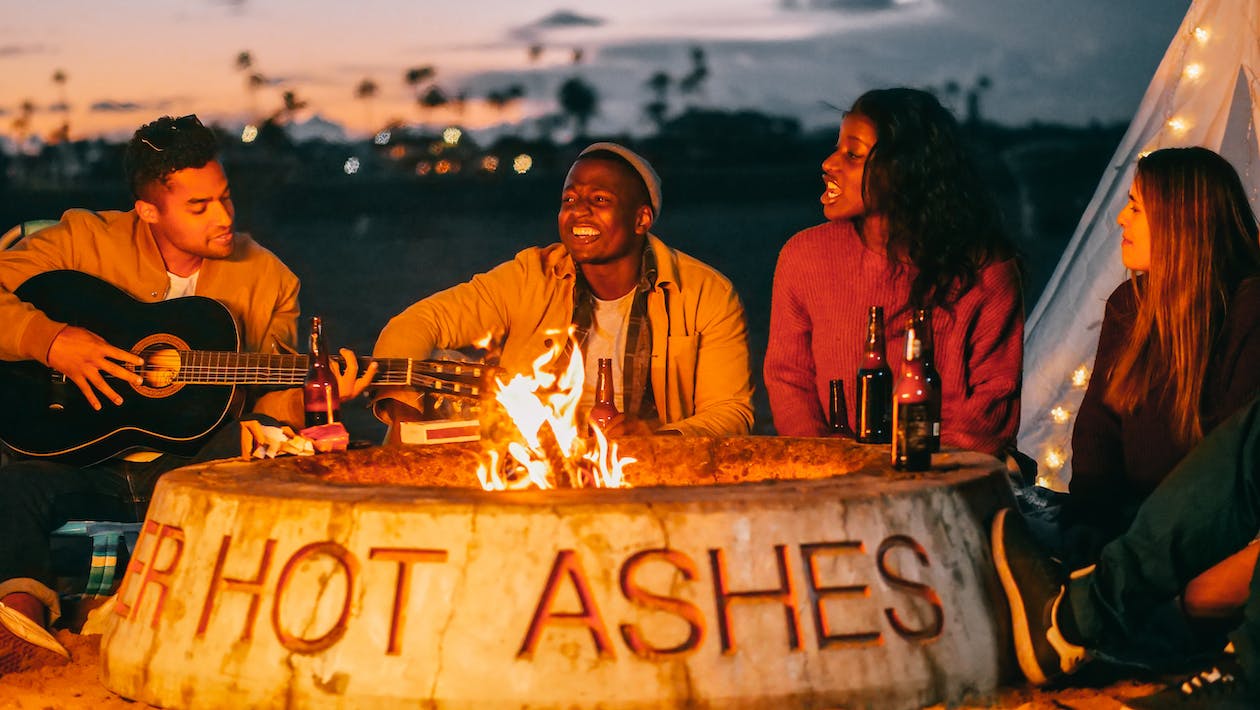
Expressions of love when someone is drunk can be complex and should be approached with care. While alcohol may lower inhibitions, allowing suppressed feelings to surface, it can also cloud judgment.
A drunk declaration of love might genuinely reflect underlying emotions, but it’s essential to consider the individual’s typical behavior and the context of the statement.
Factors like the person’s level of intoxication, the nature of the relationship, and any recent events can influence the sincerity of the statement.
Communication about these feelings when both parties are sober is crucial to gaining a more accurate understanding of the person’s intentions and emotions.
Do True Feelings Come Out When Drunk?
The idea that true feelings emerge when someone is drunk is a common belief, rooted in the notion that alcohol lowers inhibitions and fosters emotional expression.
While it’s true that some individuals may become more open and honest under the influence, it’s essential to consider the potential for impaired judgment.
Alcohol affects cognitive function, and what may seem like genuine feelings in the moment might not necessarily align with an individual’s sober thoughts.
True feelings can indeed surface when drunk, but interpreting them requires a nuanced understanding of the person, the context, and the impact of intoxication on their behavior.
Do Guys Mean What They Say When Drunk?
Determining the sincerity of statements made by guys when they’re drunk involves careful consideration of various factors.
While alcohol can reduce inhibitions and lead to more open communication, it can also impair judgment.
Statements made under the influence may reflect genuine feelings, but they can also be influenced by the individual’s altered state of mind.
The nature of the relationship, the specific words spoken, and the individual’s typical behavior when sober are all crucial factors in assessing the authenticity of statements made when drunk.
Engaging in open and honest communication about these statements when everyone is sober is key to gaining a clearer understanding of the person’s true intentions and feelings.
Conclusion: Does Drunk Flirting Show True Intentions?
In conclusion, the question of whether drunk flirting shows true intentions is a nuanced one. While alcohol can lower inhibitions and lead to more open expression of feelings, it also comes with the risk of impaired judgment and misinterpretation.
Drunk flirting may provide glimpses into genuine emotions, but it requires careful consideration of individual dynamics and the context of the interaction.


